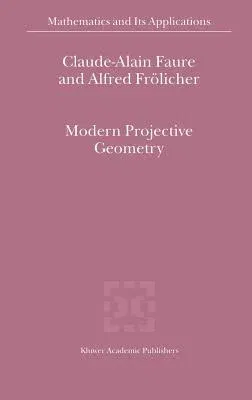Claude-Alain Faure
(Author)Modern Projective Geometry (2000)Hardcover - 2000, 30 September 2000

Qty
1
Turbo
Ships in 2 - 3 days
In Stock
Free Delivery
Cash on Delivery
15 Days
Free Returns
Secure Checkout

Part of Series
Mathematics and Its Applications
Print Length
363 pages
Language
English
Publisher
Springer
Date Published
30 Sep 2000
ISBN-10
0792365259
ISBN-13
9780792365259
Description
Product Details
Book Edition:
2000
Book Format:
Hardcover
Country of Origin:
US
Date Published:
30 September 2000
Dimensions:
23.39 x
15.6 x
2.24 cm
ISBN-10:
0792365259
ISBN-13:
9780792365259
Language:
English
Location:
Dordrecht
Pages:
363
Publisher:
Weight:
716.68 gm